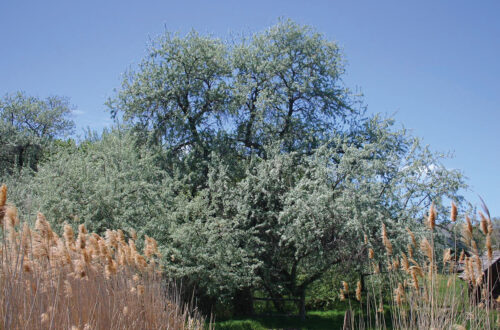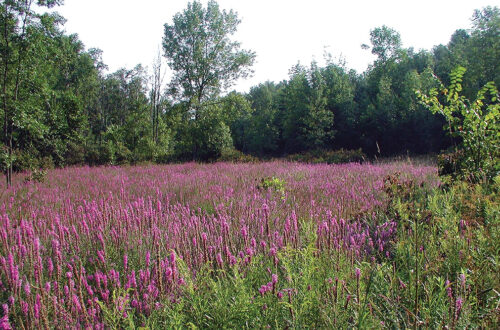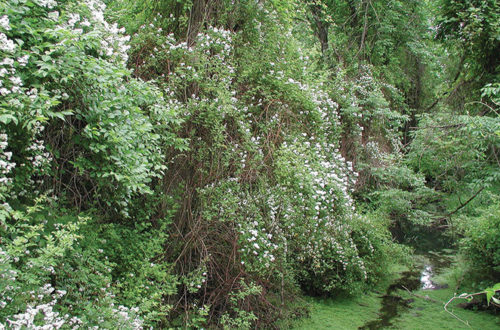Both of these invasive wisterias are deciduous woody vines, or lianas, that climb shrubs, trees and manmade structures. Some have been reported to reach 70 feet, limited only by the height of the host. They’re often found along forest edges, roadsides, ditches and rights-of-way. Both have been popular in the nursery trade.
Older plants can have stems as thick as 15 inches in diameter. They can grow 10 feet a year and live as long as 50 years.
The velvety brown seed pods are 4-6 inches long and appear after flowering, mature during the summer and may persist into winter. Each pod contains 1-8 flat round seeds. Note our native wisteria does not have fuzzy pods.
They are heavy, vigorous vines that wrap tightly and can girdle and kill trees, and damage houses. On the ground new vines form dense thickets that shade out native plants.
Both reproduce by seeds, suckers and stolons that produce shoots and roots at intervals.
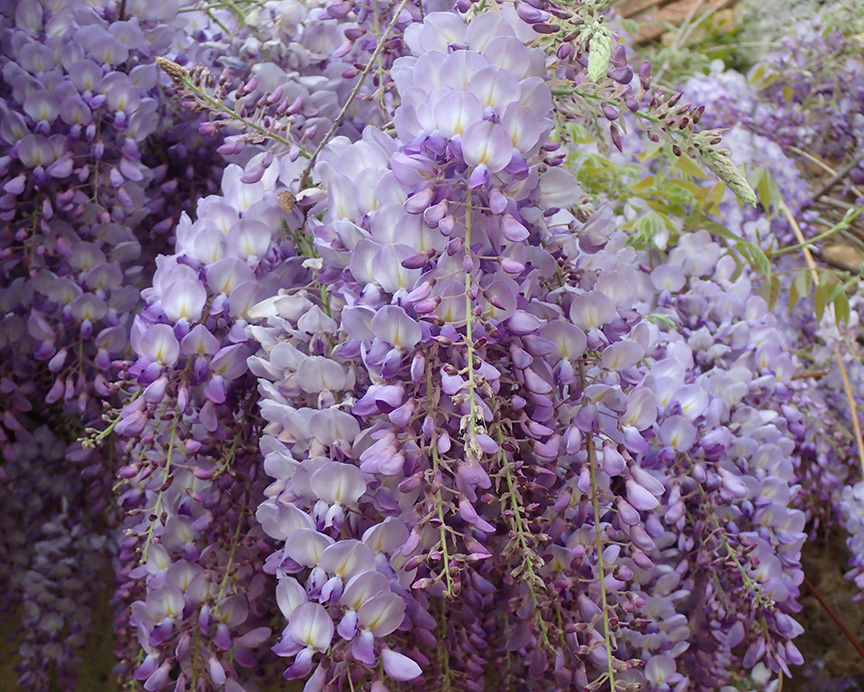
Chinese Wisteria (Wisteria sinensis)
CHINESE WISTERIA
Chinese wisteria (Wisteria sinensis) was introduced into the US as an
ornamental in 1816.
Identification
The foot-long leaves are alternate and compound with 7-13 oval leaflets with wavy edges and tapering tips. The leaflets are 3 inches long.
Fragrant blue, lavender, purple or white flowers appear in April or May before leaf expansion. They’re held in pendulous racemes up to a foot long or more. All of the flowers bloom at the same time. Some describe their fragrance as grape like.
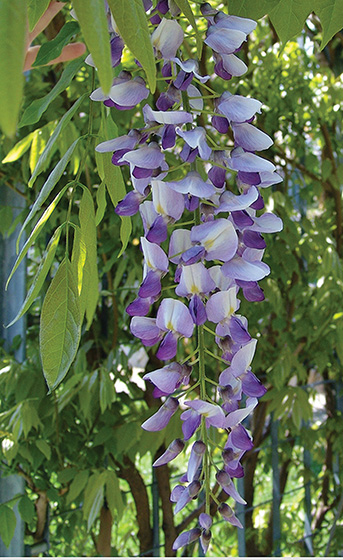
Japanese Wisteria (Wisteria floribunda) at the Arnold Arboretum.
JAPANESE WISTERIA
Japanese wisteria (Wisteria floribunda) was brought to the US in 1830.
Identification
Lush foliage and trailing racemes of white, pink, violet or blue flowers in early- to mid-spring. The flowers are held in 8-20 inch long racemes that bloom from bottom to top. Some say they smell like grapes.
The foot long leaves are alternate and pinnately compound. The leaves contain 13-19 oblong leaflets with wavy edges and tapering tips that can reach 2.5 inches in length.
Lavender, pink or white flowers appear in the spring. They’re held in pendulous racemes that may reach 20 inches long. All of the flowers bloom at the same time.
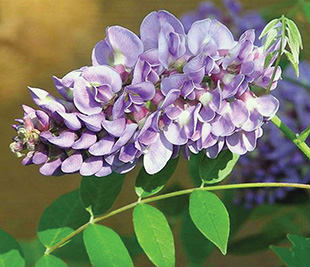
American Wisteria (Wisteria frutescens) is native. It has smaller, pale purple flowers and is not as large or vigorous.
CONTROL OF BOTH SPECIES
• Remove seedlings and get the roots.
• Repeatedly cut back plants to starve them.
• Paint cut large stems and stumps with glyphosate or triclopyr.
– Compiled by Will Rowlands


